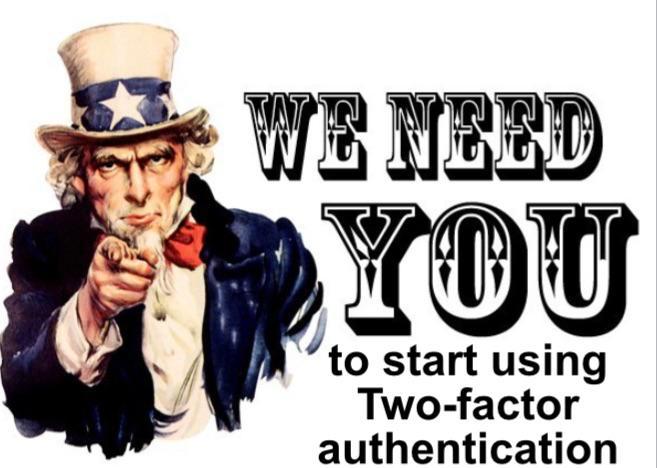Why 2FA is a pain in the arse....
While two-factor authentication (2FA) is generally considered a valuable security measure to protect accounts, it can sometimes be perceived as inconvenient or frustrating for users. If like me you sometime become frustrated and feels its a pain in the arse (or "ass" - for our colonial US audience), and too much time-consuming and disrupts the usual login flow. If you do not have your smartphone, to receive verification codes or perform authentication this can add to the frustration, which happened to me recently when abroad and not able to receive SMS text messages.
Also have you ever suffered delays in receiving a verification codes or compatibility problems with certain devices or platforms. These issues can cause annoyance and hinder the login process.
The user experience of 2FA can vary depending on the implementation. Some authentication methods, such as manually typing in codes, can be cumbersome and prone to errors. Users may also feel overwhelmed by managing multiple 2FA methods for different accounts.
However, despite these perceived inconveniences, it's essential to note that 2FA significantly enhances account security by adding a layer of protection beyond just a password. It provides an additional barrier against unauthorised access and helps prevent data breaches and identity theft. Ultimately, it's a trade-off between convenience and security, and the extra step can be worth the added protection for sensitive accounts and information.
While some people may find two-factor authentication (2FA) inconvenient, it offers several overriding benefits that make it a crucial security measure.
Enhanced Account Security: 2FA provides an additional layer of security beyond just a password. Even if an attacker gains access to your password, they would still need the second factor (e.g., a verification code or biometric authentication) to log in, significantly reducing the risk of unauthorised access.
Protection against Password-related Attacks: 2FA helps mitigate the risks associated with common password-related attacks, such as phishing, credential stuffing, and brute-force attacks. Even if your password is compromised, the second factor acts as a crucial line of defence.
Defence against Account Takeover: Account takeover is a prevalent form of cybercrime in which attackers gain unauthorised access to user accounts. By implementing 2FA, the likelihood of successful account takeovers is significantly reduced, as attackers would need physical possession of the second factor or specific biometric information.
Security Across Multiple Platforms: 2FA can be implemented on various platforms, including email accounts, social media profiles, banking websites, and cloud services. This means that a single authentication method can offer additional protection for multiple online accounts and services.
Regulatory Compliance: Many industries and sectors are required to comply with data protection regulations that mandate the use of stronger authentication methods, including 2FA. Implementing 2FA ensures compliance with these regulations and helps protect sensitive information.
Peace of Mind: 2FA provides users with peace of mind, knowing that their accounts have an added layer of security. Users can feel more confident that their personal and sensitive information is better protected against unauthorised access and potential data breaches.
So, whilst 2FA sometimes is an inconvenience I tend to leave mine on as the benefits it provides in terms of security and protection against cyber threats outweigh the minor inconvenience for most users.
2FA or MFA (Multi-Factor Authentication) is an essential requirement for IASME Cyber Essentials and quite right too.

Also have you ever suffered delays in receiving a verification codes or compatibility problems with certain devices or platforms. These issues can cause annoyance and hinder the login process.
The user experience of 2FA can vary depending on the implementation. Some authentication methods, such as manually typing in codes, can be cumbersome and prone to errors. Users may also feel overwhelmed by managing multiple 2FA methods for different accounts.
However, despite these perceived inconveniences, it's essential to note that 2FA significantly enhances account security by adding a layer of protection beyond just a password. It provides an additional barrier against unauthorised access and helps prevent data breaches and identity theft. Ultimately, it's a trade-off between convenience and security, and the extra step can be worth the added protection for sensitive accounts and information.
While some people may find two-factor authentication (2FA) inconvenient, it offers several overriding benefits that make it a crucial security measure.
Enhanced Account Security: 2FA provides an additional layer of security beyond just a password. Even if an attacker gains access to your password, they would still need the second factor (e.g., a verification code or biometric authentication) to log in, significantly reducing the risk of unauthorised access.
Protection against Password-related Attacks: 2FA helps mitigate the risks associated with common password-related attacks, such as phishing, credential stuffing, and brute-force attacks. Even if your password is compromised, the second factor acts as a crucial line of defence.
Defence against Account Takeover: Account takeover is a prevalent form of cybercrime in which attackers gain unauthorised access to user accounts. By implementing 2FA, the likelihood of successful account takeovers is significantly reduced, as attackers would need physical possession of the second factor or specific biometric information.
Security Across Multiple Platforms: 2FA can be implemented on various platforms, including email accounts, social media profiles, banking websites, and cloud services. This means that a single authentication method can offer additional protection for multiple online accounts and services.
Regulatory Compliance: Many industries and sectors are required to comply with data protection regulations that mandate the use of stronger authentication methods, including 2FA. Implementing 2FA ensures compliance with these regulations and helps protect sensitive information.
Peace of Mind: 2FA provides users with peace of mind, knowing that their accounts have an added layer of security. Users can feel more confident that their personal and sensitive information is better protected against unauthorised access and potential data breaches.
So, whilst 2FA sometimes is an inconvenience I tend to leave mine on as the benefits it provides in terms of security and protection against cyber threats outweigh the minor inconvenience for most users.
2FA or MFA (Multi-Factor Authentication) is an essential requirement for IASME Cyber Essentials and quite right too.


